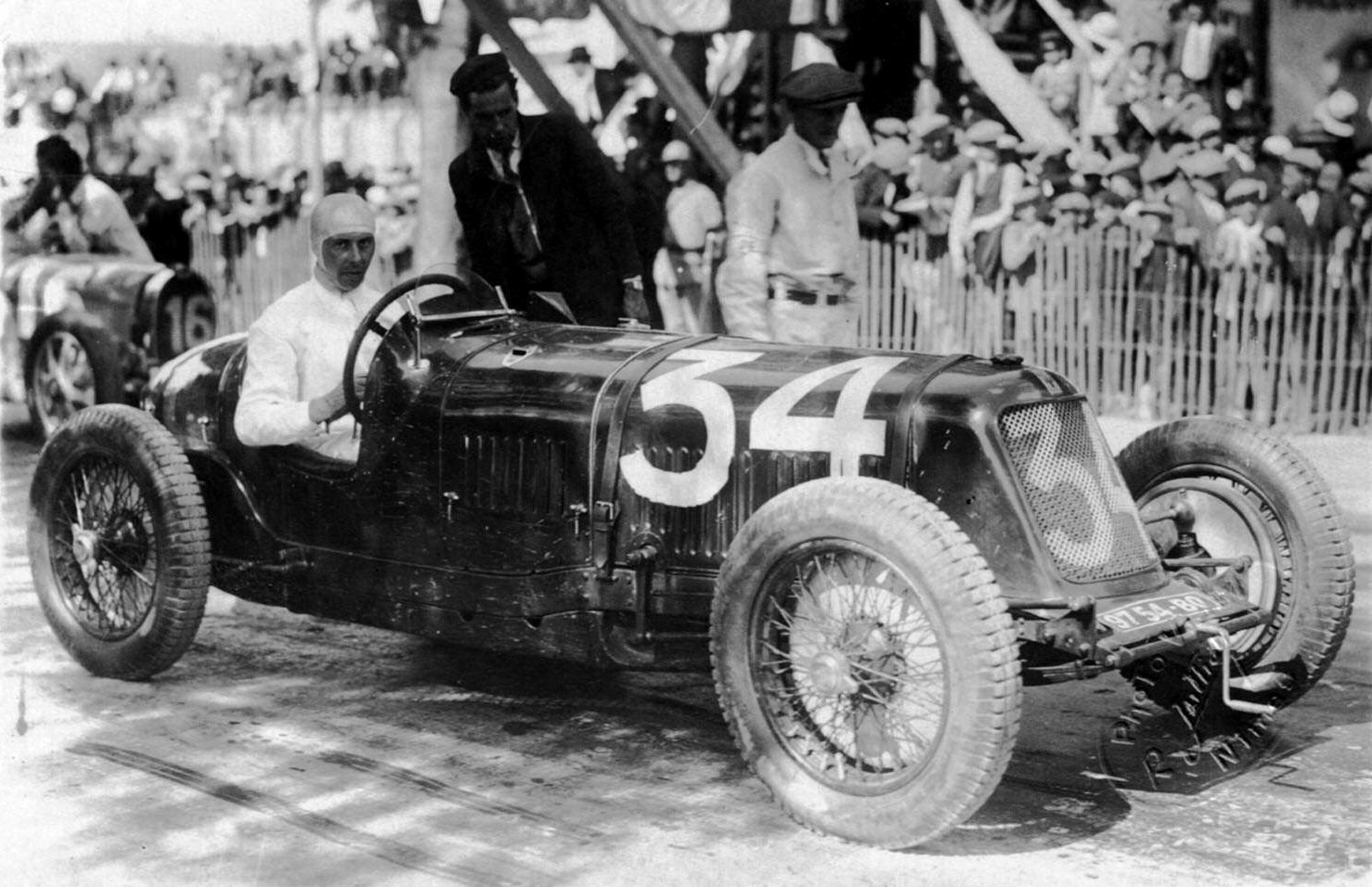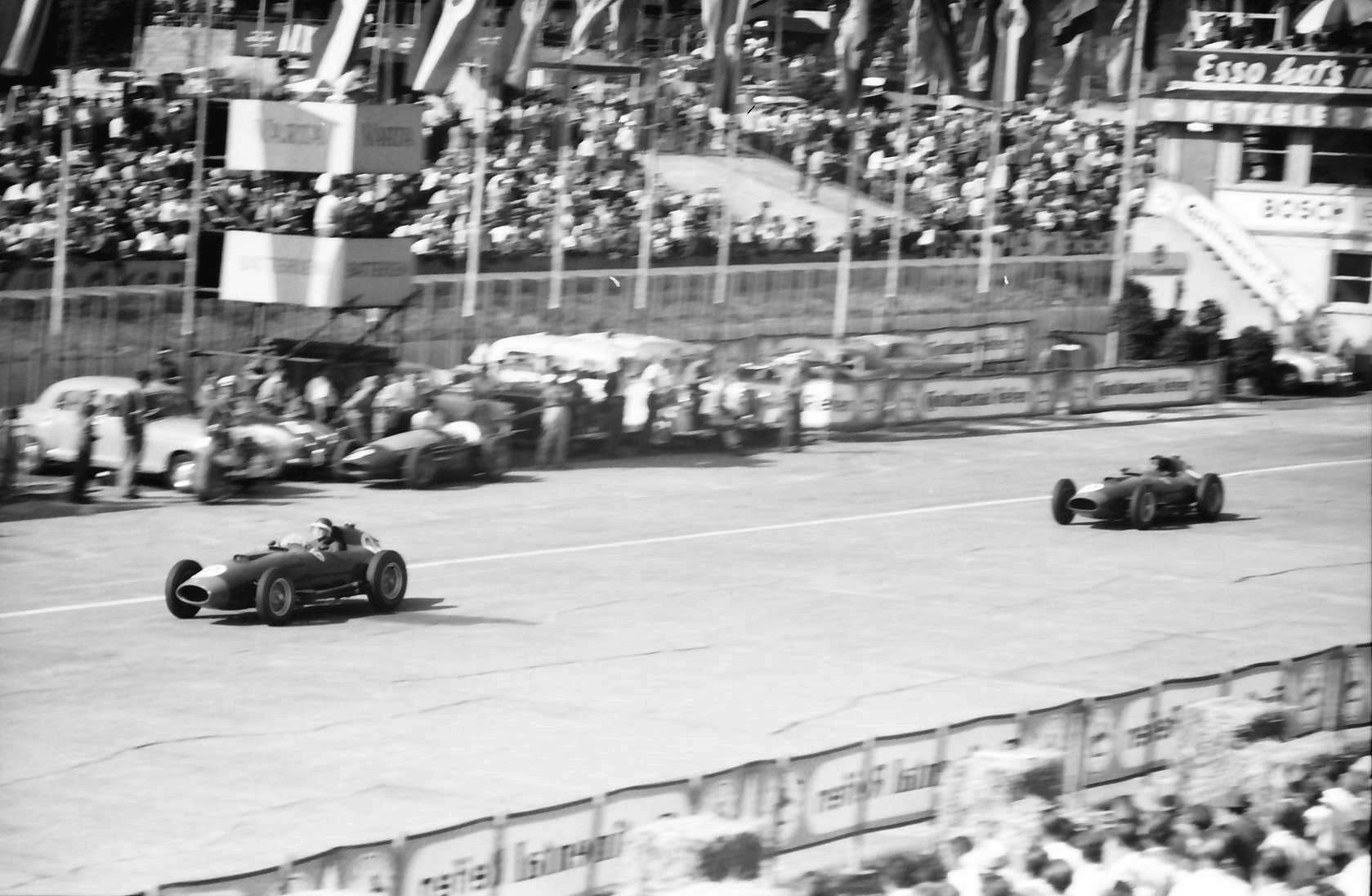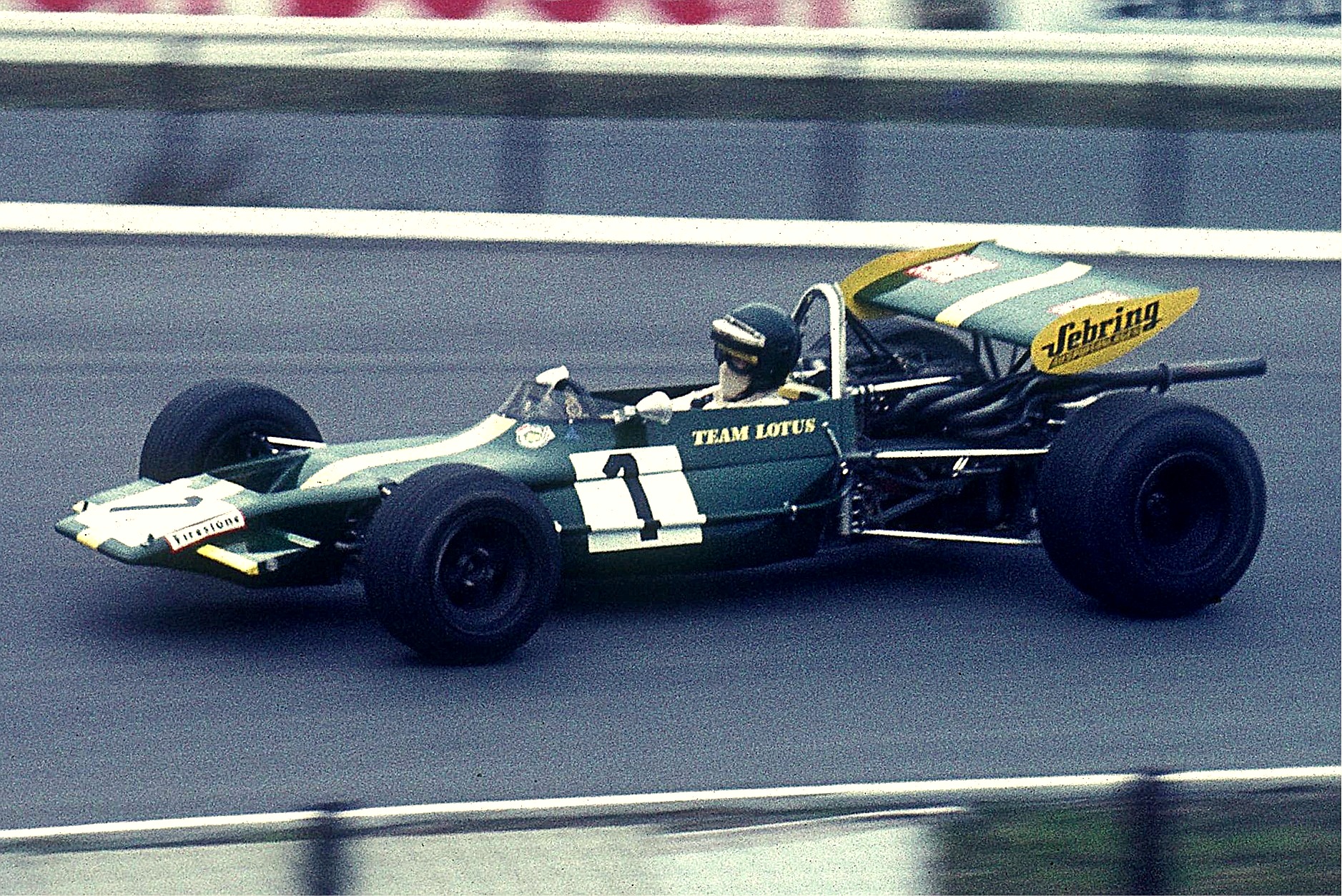|
Harry Schell
Henry O'Reilly "Harry" Schell (June 29, 1921 – May 13, 1960) was an American Grand Prix motor racing driver. He was the first American driver to start a Formula One Grand Prix. Early life Schell was born in Paris, France, the son of expatriate American and sometime auto racer Laury Schell; his mother was the wealthy American heiress Lucy O'Reilly Schell. O'Reilly was an auto racing enthusiast who had met Laury while visiting France; they soon became familiar names on the rallying scene together. She became heavily invested in the Delahaye concern, first campaigning sports cars for them and then championing the development of a Delahaye Grand Prix car, which she ran under the Ecurie Bleue banner. Frenchman René Dreyfus won the 1938 Pau Grand Prix for the team in a shock upset over Mercedes, but the Delahaye project failed to raise the necessary backing and was never developed to its full extent. Shortly before the outbreak of the Second World War, Schell's parents were ... [...More Info...] [...Related Items...] OR: [Wikipedia] [Google] [Baidu] |
Paris
Paris () is the capital and most populous city of France, with an estimated population of 2,165,423 residents in 2019 in an area of more than 105 km² (41 sq mi), making it the 30th most densely populated city in the world in 2020. Since the 17th century, Paris has been one of the world's major centres of finance, diplomacy, commerce, fashion, gastronomy, and science. For its leading role in the arts and sciences, as well as its very early system of street lighting, in the 19th century it became known as "the City of Light". Like London, prior to the Second World War, it was also sometimes called the capital of the world. The City of Paris is the centre of the Île-de-France region, or Paris Region, with an estimated population of 12,262,544 in 2019, or about 19% of the population of France, making the region France's primate city. The Paris Region had a GDP of €739 billion ($743 billion) in 2019, which is the highest in Europe. According to the Economist Intelli ... [...More Info...] [...Related Items...] OR: [Wikipedia] [Google] [Baidu] |
René Dreyfus
René Dreyfus (6 May 1905 – 16 August 1993) was a French driver who raced automobiles for 14 years in the 1920s and 1930s, the Golden Era of Grand Prix motor racing. Early life Dreyfus was born and raised in Nice to a Jewish family. He showed an early interest in automobiles, learning to drive before the age of nine. The middle of three children, his brother Maurice served as his business partner in his youth, and his manager in his racing career. Career Driving career Driving Maseratis, Ferraris, Delahayes, and Bugattis against some of the greatest drivers of all time, Dreyfus won 36 races across Europe, including Monaco, Florence, Rheims, Belgium, Cork, Dieppe, Pau, and at Tripoli in North Africa, becoming a French national hero. He acquired a Bugatti and joined the Moto Club de Nice for younger competitive automotive enthusiasts. In 1924 he won his class in the first amateur race he entered, being the only entrant in the class, and went on to win three consecutive ... [...More Info...] [...Related Items...] OR: [Wikipedia] [Google] [Baidu] |
Mike Hawthorn
John Michael Hawthorn (10 April 1929 – 22 January 1959) was a British racing driver. He became the United Kingdom's first Formula One World Champion driver in 1958, whereupon he announced his retirement, having been profoundly affected by the death of his teammate and friend Peter Collins two months earlier in the 1958 German Grand Prix. Hawthorn also won the 1955 24 Hours of Le Mans, but was haunted by his involvement in the disastrous crash that marred the race. Hawthorn died in a road accident three months after retiring. With a total of three career World Championship Grand Prix wins Hawthorn has the lowest number of Grand Prix wins scored by any Formula One World Champion. Early life Mike Hawthorn was born in Mexborough, West Riding of Yorkshire, England, to Leslie and Winifred (née Symonds) Hawthorn, and educated at Ardingly College, West Sussex, followed by studies at Chelsea technical college and an apprenticeship with a commercial vehicle manufacturer. His fathe ... [...More Info...] [...Related Items...] OR: [Wikipedia] [Google] [Baidu] |
1956 French Grand Prix
The 1956 French Grand Prix was a Formula One motor race held on 1 July 1956 at Reims. It was race 5 of 8 in the 1956 World Championship of Drivers. Bugatti made a one-off appearance in this race with their Type 251 driven by Maurice Trintignant. The car proved to be uncompetitive and he retired after 18 laps. Classification Qualifying Race ;Notes * – Includes 1 point for fastest lap Shared drives * Car #6: Cesare Perdisa (20 laps) and Stirling Moss (39 laps). They shared the 2 points for fifth place. * Car #24: Mike Hawthorn (10 laps) and Harry Schell (46 laps). Championship standings after the race ;Drivers' Championship standings *Note: Only the top five positions are included. References {{F1GP 50-59 French Grand Prix The French Grand Prix (french: Grand Prix de France), formerly known as the Grand Prix de l'ACF (Automobile Club de France), is an auto race held as part of the Fédération Internationale de l'Automobile's annual Formula One World Champ ... [...More Info...] [...Related Items...] OR: [Wikipedia] [Google] [Baidu] |
1954 Spanish Grand Prix
The 1954 Spanish Grand Prix was a Formula One motor race held on 24 October 1954 at Pedralbes. It was the ninth and final race in the 1954 World Championship of Drivers. The 80-lap race was won by Ferrari driver Mike Hawthorn after he started from third position. Luigi Musso finished second for the Maserati team and Mercedes driver Juan Manuel Fangio came in third. Race report The long-awaited Lancia D50s arrived-using their 90 degree V8 engine as a stiffening aid for the chassis; they were simple but brilliantly designed. Alberto Ascari immediately set the fastest practice lap and led from pole. Luigi Villoresi in the fellow Lancia retired with brake trouble after just 1 lap and Ascari succumbed to clutch problems after 9 laps. Various other drivers took the lead and then retired; Harry Schell spun off, Maurice Trintignant had mechanical problems and Stirling Moss overheated (one of several retirements caused by flying newspaper jamming the radiator ducts). The race boiled ... [...More Info...] [...Related Items...] OR: [Wikipedia] [Google] [Baidu] |
1955 Monaco Grand Prix
The 1955 Monaco Grand Prix was a Formula One motor race held at Monaco on 22 May 1955. It was race 2 of 7 in the 1955 World Championship of Drivers and was given an honorary name, ''Grand Prix d'Europe''. The 100-lap race was won by Ferrari driver Maurice Trintignant after he started from ninth position. Eugenio Castellotti finished second for the Lancia team and Maserati drivers Jean Behra and Cesare Perdisa came in third. Race report Stirling Moss had been signed by Mercedes for the new season and Maserati had replaced him with Jean Behra. The Silver Arrows of Fangio and Moss dominated, running 1–2 until half distance, trailed by Ascari and Castellotti. At the halfway mark, Fangio retired with transmission trouble,Kettlewell, p.1383. giving the lead to Moss. Almost a lap ahead, a seemingly sure win for Moss was ended on Lap 80 when his Benz's engine blew. The new leader, Ascari, miscalculated the chicane coming out of the tunnel, and his Lancia crashed through the barrier ... [...More Info...] [...Related Items...] OR: [Wikipedia] [Google] [Baidu] |
Juan Manuel Fangio
Juan Manuel Fangio (American Spanish: , ; 24 June 1911 – 17 July 1995), nicknamed ''El Chueco'' ("the bowlegged" or "bandy legged one") or ''El Maestro'' ("The Master" or "The Teacher"), was an Argentine racing car driver. He dominated the first decade of Formula One racing, winning the World Drivers' Championship five times. From childhood, he abandoned his studies to pursue auto mechanics. In 1938, he debuted in Turismo Carretera, competing in a Ford V8. In 1940, he competed with Chevrolet, winning the Grand Prix International Championship and devoted his time to the Argentine Turismo Carretera becoming its champion, a title he successfully defended a year later. Fangio then competed in Europe between 1947 and 1949, where he achieved further success. He won the World Championship of Drivers five times—a record that stood for 46 years until beaten by Michael Schumacher—with four different teams (Alfa Romeo, Ferrari, Mercedes-Benz, and Maserati). He holds the highe ... [...More Info...] [...Related Items...] OR: [Wikipedia] [Google] [Baidu] |
12 Hours Of Sebring
The 12 Hours of Sebring is an annual motorsport endurance race for sports cars held at Sebring International Raceway, on the site of the former Hendricks Army Airfield World War II air base in Sebring, Florida, US. The event is the second round of the WeatherTech SportsCar Championship and in the past has been a round of the now defunct World Sportscar Championship, IMSA GT Championship and American Le Mans Series. In 2012, the race was the opening event of the FIA World Endurance Championship. History The track opened in 1950 on an airfield and is a road racing course styled after those used in European Grand Prix motor racing. The first race was a six-hour race on New Year's Eve 1950. The winning car is currently on display at the Edge Motor Museum in Memphis, Tennessee. The next race held 14 months later as the first 12 Hours of Sebring. The race is famous for its "once around the clock" action, starting during the day and finishing at night. From 1953 to 1972 the 12 Hour ... [...More Info...] [...Related Items...] OR: [Wikipedia] [Google] [Baidu] |
Stirling Moss
Sir Stirling Craufurd Moss (17 September 1929 – 12 April 2020) was a British Formula One racing driver. An inductee into the International Motorsports Hall of Fame, he won 212 of the 529 races he entered across several categories of competition and has been described as "the greatest driver never to win the World Championship". In a seven-year span between 1955 and 1961 Moss finished as championship runner-up four times and in third place another three times. Early life Moss was born in London, son of Alfred Moss, a dentist of Bray, Berkshire, and Aileen (née Craufurd). His grandfather was Jewish, from a family that changed their surname from Moses to Moss. He was brought up at ''Long White Cloud'' house on the south bank of the River Thames. His father was an amateur racing driver who had come 16th in the 1924 Indianapolis 500. Aileen Moss had also been involved in motorsport, entering prewar hillclimbs at the wheel of a Singer Nine. Stirling was a gifted horse rider ... [...More Info...] [...Related Items...] OR: [Wikipedia] [Google] [Baidu] |
1958 Dutch Grand Prix ...
The 1958 Dutch Grand Prix was a Formula One motor race held on 26 May 1958 at Zandvoort. It was race 3 of 11 in the 1958 World Championship of Drivers and race 3 of 10 in the 1958 International Cup for Formula One Manufacturers. Classification Qualifying Race ;Notes * – Includes 1 point for fastest lap Championship standings after the race ;Drivers' Championship standings ;Constructors' Championship standings * Note: Only the top five positions are included for both sets of standings. References {{F1GP 50-59 Dutch Grand Prix Dutch Grand Prix Grand Prix Dutch Grand Prix The Dutch Grand Prix ( nl, Grote Prijs van Nederland) is a Formula One motor racing event held at Circuit Zandvoort, North Holland, the Netherlands, from 1950 to 1985 and from 2021 onwards. It was a part of the World Championship from 1952, ... [...More Info...] [...Related Items...] OR: [Wikipedia] [Google] [Baidu] |
Formula 2
Formula Two (F2 or Formula 2) is a type of open-wheel formula racing category first codified in 1948. It was replaced in 1985 by Formula 3000, but revived by the FIA from 2009–2012 in the form of the FIA Formula Two Championship. The name returned in 2017 when the former GP2 Series became known as the FIA Formula 2 Championship. History While Formula One has generally been regarded as the pinnacle of open-wheeled auto racing, the high-performance nature of the cars and the expense involved in the series has always meant a need for a path to reach this peak. For much of the history of Formula One, Formula Two has represented the penultimate step on the motorsport ladder. Pre-war Prior to the Second World War, there usually existed a division of racing for cars smaller and less powerful than Grand Prix racers. This category was usually called voiturette ("small car") racing and provided a means for amateur or less experienced drivers and smaller marques to prove themselves. ... [...More Info...] [...Related Items...] OR: [Wikipedia] [Google] [Baidu] |
Formula 3
Formula Three, also called Formula 3, abbreviated as F3, is a third-tier class of open-wheel formula racing. The various championships held in Europe, Australia, South America and Asia form an important step for many prospective Formula One drivers. History Formula Three (adopted by the FIA in 1950) evolved from postwar auto racing, with lightweight tube-frame chassis powered by 500 cc motorcycle engines (notably Nortons and JAP speedway). The 500 cc formula originally evolved in 1946 from low-cost "special" racing organised by enthusiasts in Bristol, England, just before the Second World War; British motorsport after the war picked up slowly, partly due to petrol rationing which continued for a number of years and home-built 500 cc cars engines were intended to be accessible to the "impecunious enthusiast". The second post-war motor race in Britain was organised by the VSCC in July 1947 at RAF Gransden Lodge, 500cc cars being the only post-war class to run that day. Three of ... [...More Info...] [...Related Items...] OR: [Wikipedia] [Google] [Baidu] |





